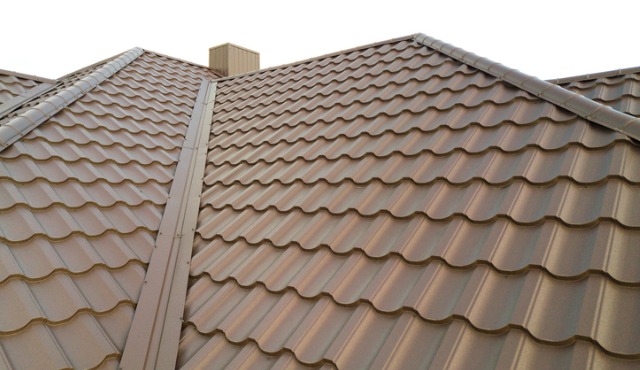By Brooke Chaplan
If you’re thinking about replacing your roof, you may want to consider metal roofing as an option. Metal roofs can be made from a variety of materials, including copper, steel, aluminum, and zinc alloys. They’re highly durable and energy-efficient, but there are pros and cons to weigh before deciding. Let’s take a look at the advantages and disadvantages of metal roofing for your home.
Pros of Metal Roofing
Metal roofs are extremely strong and durable so that they can withstand extreme weather conditions like high winds, heavy rains, snowfall, hail storms, and even fire. And since they come in a variety of styles and colors to choose from—including ribbed panels, standing seam panels, corrugated shingles, etc.—you can easily find one that matches the aesthetic of your home or business. Plus, metal roofs have a lifespan of up to 60 years (longer than most other roof types), so you won’t have to worry about replacing them as often as you would with other materials.
Metal roofs also provide superior insulation for your home or business because they reflect heat away from them during the summer months. This can help reduce your energy bills by keeping your space cooler during hot days. In addition to being more energy efficient than other types of roofs (like asphalt shingles), metal is also much more eco-friendly since it’s 100% recyclable after its life expectancy is over. So you don’t have to worry about adding more waste into landfills when it comes time for a replacement.
Cons of Metal Roofing
One downside to metal roofs is that they can be expensive compared to other materials like asphalt shingles or wood shake tiles. Also, while they are very durable in extreme weather conditions (like hail storms), they aren’t immune to potential damage from falling branches or debris caused by high winds. So if you live in an area prone to severe weather events, then this might not be the best choice for you either. Finally, because metal roofs expand and contract when temperatures change during the day/night cycle (which is normal wear-and-tear), any fasteners used on it must be rated for thermal movement; otherwise, they could become loose over time due to these expansion/contraction cycles which would decrease its overall lifespan significantly.
All in all, metal roofing has many benefits that make it an attractive option for homeowners looking for a new roof solution—namely, its durability and energy efficiency—but there are some drawbacks to that should be taken into consideration before making any final decisions about what type of roof material will best suit your needs (e.g., costliness). To make sure you get the most out of your new roof installation project, we recommend consulting with a professional contractor who specializes in installing metal roofs so they can advise you on which material will best suit your particular climate needs as well as budget requirements!
 Brooke Chaplan is a freelance writer and blogger. She lives and works out of her home in Los Lunas, New Mexico. She recommends reaching out to local metal roofing specialists, like JMS Exteriors LLC, for more information on roofing. For more information, contact Brooke via Twitter @BrookeChaplan.
Brooke Chaplan is a freelance writer and blogger. She lives and works out of her home in Los Lunas, New Mexico. She recommends reaching out to local metal roofing specialists, like JMS Exteriors LLC, for more information on roofing. For more information, contact Brooke via Twitter @BrookeChaplan.








